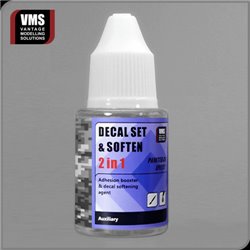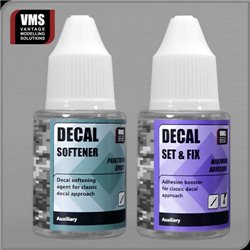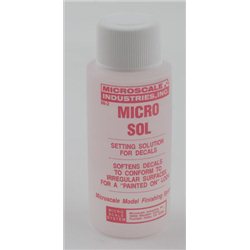7/0.2 wire is what railway modellers most commonly use for wiring auxiliary features to their layouts and to carry...
No products
Product successfully added to your shopping cart
There are 0 items in your cart. There is 1 item in your cart.
Search Tips
Do I need to apply a gloss surface to my models before applying decals?
In simple terms, no, a gloss surface is not always needed for the application of decals but this is not a straightforward question to answer. As a general rule modellers have applied decals on gloss surfaces for two reasons. Firstly, a gloss surface is smooth and has less friction thus making it easier to move the decal during precise positioning. Secondly, a gloss surface can make it easier to blend the decals carrier film into the surface which could otherwise leave a tell-tale sheen against the background paintwork.
Many modellers will cut decals to prepare them for application to the model, this can help remove excess and unwanted carrier film and make the decal easier to move and position. However, there is a compromise as the carrier film backing provides the decal with strength and surface tension. Thus removing too much carrier film can significantly weaken the decal's strength making it unworkable.
Additionally, in order to soften and shape decals many setting fluids contain strong chemicals including solvents. Used without caution, these can attack the underlying varnish and paint layers thus noticeably spoiling the finish.
Manufacturers are aware of this problem and are seeking to address it. Some manufacturers now produce solutions that allow decals to be applied straight onto the painted finish without a need for a varnish. One such solution is 'Decal Set & Soften' by Vantage Modelling Solutions (VMS). As the name suggests this is a 2 in 1 solution that includes both a fixing and setting solution. The location for the decal receives a small amount of solution applied by a paintbrush before the decal is applied. This allows the decal to adhere to the surface. Light pressure can be applied by a cloth or cotton bud which helps to remove excess air bubbles and help blend the carrier film onto the surface. The liquid applied will also aid in the softening of the decal allowing it to effectively shape itself to the surface contours for that 'Painted on' effect.
Once the decals are in place then any excess solution can be removed by a cotton bud or neutralised by water applied from a paintbrush. The solution should be allowed to cure for 24 hours as this will allow the softening process to fully shape the decal to the surface. Once this is complete, the model can then be varnished as required to help protect the painted surface and also help lock in the decal to the surface finish whilst removing any excess shine from the carrier film.
Click here to receive the tips weekly in your mailbox. You can unsubscribe at any time.










